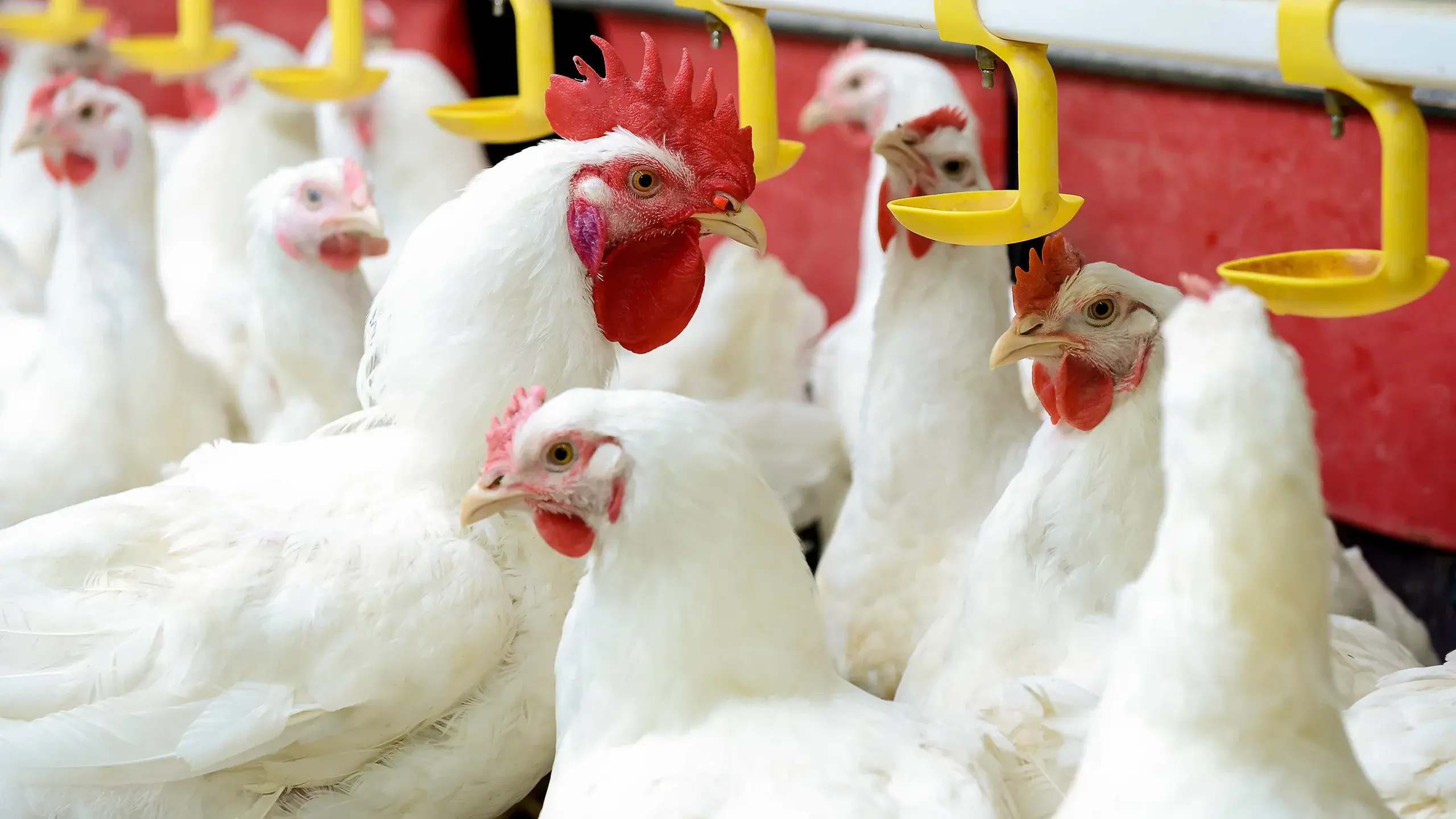
Dr. Jaime Ruiz
Dr. Jaime Ruiz earned his Master of Science and Master of Avian Medicine from the University of Georgia. He is currently board certified by the American College of Poultry Veterinarians. His areas of expertise include broiler and broiler-breeder vaccines, intestinal integrity, and food safety/salmonella vaccines.
Early Detection, Management and Vaccination Are Important in Infectious Bursal Disease Prevention
Infectious bursal disease (IBD), also known as Gumboro disease, can cause severe, long-lasting suppression of the immune system in chickens. A highly contagious disease of young chickens in which the tissues of the immune system are targeted, IBD results in immunosuppression in the chicken and susceptibility to other infections, such as E. coli, Mycoplasma, coccidia, and other diseases.
Flock morbidity is typically 100%, and mortality can range from 5% to greater than 60% depending on the strain of virus and breed of chicken¹. Therefore, it’s vital to have the right vaccination program in place to prevent or limit its impact on performance (feed efficiency, growth, mortality), making early detection key to disease management and prevention.
Early Detection is Key
The onset of IBD occurs after an incubation period of two to three days; for this reason, early detection is key because healthy birds are susceptible to the infectious bursal disease virus. Chickens that are immunosuppressed by early IBD infections do not respond well to vaccination and are more susceptible to other respiratory and intestinal diseases, including those that don’t normally affect healthy birds.
Early Susceptibility
Susceptibility to infectious bursal disease usually begins at 18 days of age. After 30 days, poultry producers will see the secondary effects of an IBD infection – necrotic enteritis, secondary infections, inclusion body hepatitis (IBH), gangrenous dermatitis and respiratory disease conditions.
Immunosuppression can also result in:
- Excessive vaccine reaction
- Late coccidiosis cycling
- Secondary bacterial infections
- Lingering elevated mortality
- Poor performance
- Elevated levels of plant condemnation
Is Better Management or Vaccination the Answer?
How do poultry producers weigh the pros and cons of controlling IBD through better management practices or a vaccination program? The best approach is a combination of both.
Management practices and vaccination programs go hand in hand. If you have an effective vaccination program, but have challenges with bird management, then controlling IBD may be challenging. On the contrary, you may have excellent management but no vaccination program, and this will make managing IBD in your birds a challenge.
I recommend having a sound management strategy in place that includes good biosecurity practices, steps to ensure litter quality, appropriate flock density, implementation of cleaning and disinfection practices and access to good quality water.
There are many effective vaccination programs available to help control IBD. However, one of the first steps is to work with your consulting veterinarian to identify the infectious bursal disease virus (IBDV) serotype and strain by collecting bursal samples and, if necessary, performing a bursal survey and lab analysis to better understand if you are dealing with a highly pathogenic or nonpathogenic virus.
Once you know what type of virus you’re dealing with, your consulting veterinarian can help develop a vaccination program using modified live, inactivated or autogenous vaccines to help control IBD in your chickens.
Effective Vaccination Begins with the Breeder Flock
Effective control of IBD begins with vaccinating breeder flocks to induce maternal immunity in young chicks.
A typical broiler breeder vaccination program begins with the administration of a modified live vaccine early in the life of a bird via a coarse spray or the drinking water. Then a similar modified live vaccine is administered at around 4 weeks of age and again around 8–10 weeks of age. Typically, at 12 weeks of age, the broiler breeder will receive an inactivated autogenous or commercial vaccine, and some poultry companies also provide an inactivated booster around 18 weeks of age.
When it comes to the broiler, a live vaccine is administered at hatch, and a field boost can be applied at 2 weeks of age.
There are four different types of classic live vaccines — mild, intermediate, intermediate plus, and hot. Mild and hot refer to the ability of the vaccine to replicate in the bursal tissue. Mild and intermediate vaccines typically cause less bursal damage, but they cause less bursal damage but are easily neutralized by high levels of maternally derived antibodies.
Elanco offers vaccines and an experienced Technical Consultant team to help poultry producers develop an effective IBD prevention strategy.
Tags
Infectious bursal disease
Gumboro disease
Infectious bursal disease virus
Live vaccine
Breeder
Immunosuppression disease
1 Merck Veterinary Manual. https://www.merckvetmanual.com/poultry/infectious-bursal-disease/infectious-bursal-disease-in-poultry?query=bursal%20disease
